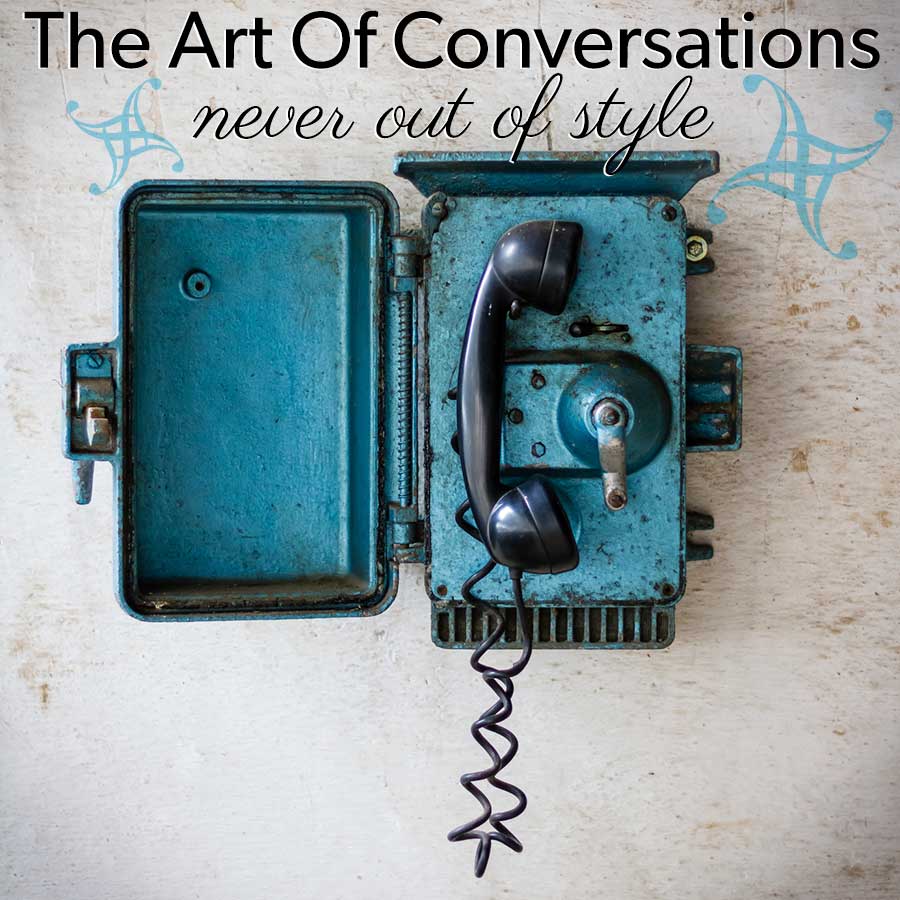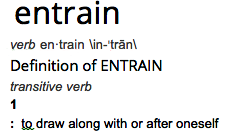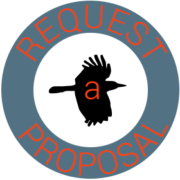The Art Of Conversations For Your Business
What Do Your Customers Need That You Have?
Hint: It’s not all in your product or service. It’s also in your communication.
[Tweet “Every conversation is a negotiation of energies, needs, desires, style and ideas.”] A dance of touch and no touch, movements in unison or awkward and misfired signals, efforts to catch up, line up, get and stay in sync. There’s giving and receiving, quiet and sound, listening and speaking; a back and forth, an interweaving of impulses, excitement, connection. Or no connection.
We want to answer the right questions and solve the right problems – the ones that address our customers and clients biggest concerns and to be able to respond to their most pressing needs. It’s the most efficient and productive way to seed and develop lasting relationships and the right way to do business. Learning increasingly more about what those questions and problems are is a task we’re continually engaged in; an everlasting quest to know who we’re serving better and better. We are compiling our arsenal of answers and solutions at all times. It shows up in our content and on the fly.
We talk, we write, we get in front of a camera, we produce content for ours and others’ websites and blogs, social channels. Those are all opportunities to demonstrate the answers and solutions we perceive and deliver, begin to earn the trust we are looking for. There’s no shortage of opportunity, but there’s nuance and subtleties all along the way. And what about the one-on-one conversation?
Here We Go, This Is It
[Tweet “What do we do when one of the golden moments we’ve been waiting for arrives?”]
When we have their attention.
Here, now, is our chance to say it directly – what we believe needs to be said. We’re excited and feel the anticipation. We’re listening and speaking and all the while really listening, delicately choosing where and when to respond and also to insert our own words. It’s somewhat different every time but similar enough to lead us to believing we know what we’re doing; we are practiced. Yet those types of conversations can be a moving target with constantly changing combinations of communicators, methods and conditions. So it’s not necessarily easy.
[perfectpullquote align=”full” cite=”” link=”” color=”” class=”” size=””]“Every act of communication is an act of tremendous courage in which we give ourselves over to two parallel possibilities: the possibility of planting into another mind a seed sprouted in ours and watching it blossom into a breathtaking flower of mutual understanding; and the possibility of being wholly misunderstood, reduced to a withering weed. Candor and clarity go a long way in fertilizing the soil, but in the end there is always a degree of unpredictability in the climate of communication — even the warmest intention can be met with frost. Yet something impels us to hold these possibilities in both hands and go on surrendering to the beauty and terror of conversation, that ancient and abiding human gift. And the most magical thing, the most sacred thing, is that whichever the outcome, we end up having transformed one another in this vulnerable-making process of speaking and listening.” Maria Popova, Brain Pickings “Telling Is Listening…”[/perfectpullquote]
Where’s The Heart?
Where is the sweet spot in the negotiation between two people that is at the heart of communication itself and how do we ensure we land there?
We often seem to play at the edge of a tricky balance of us and them in our conversations with clients and customers. It’s natural that we have a lot to show and tell. There are the basics to impart in order to do business and there’s the related information or outlook and opinions we truly enjoy sharing. And let’s face it, some manner of expression of our expertise and ability. There are also those opportunities in which we find ourselves in a position to educate when whom we’re speaking with shows evidence of being unfamiliar with the territory. In short, there is no shortage of things to say.
Seeking Answers
But what about the questions our clients and customers are actually asking either out loud or in their minds, formulated or not quite? Here’s what they really want to know and interestingly those are the things that will steer them to choosing us. How do we single those out and make sure we address them? Are we listening actively?
There’s a bit of mind reading involved but we can’t let false intuition or automatic pilot fool us.
What Is Your Communication Entry Point?
The conversation has to start somewhere, open up and then travel through a middle point and eventually take possession of a halt or end like any story or journey does.
We answer the phone, respond to an inquiry form email from our website, we enter a meeting.
[Tweet “We say “hello” and then it begins.”]
Where do our two agendas intersect? And why do they need to be separated at all because, actually, we both want and need the same thing- their success. And our participation in it. Okay, sure, they don’t yet have an investment in our participation, but we’re hoping to get there. We’re moving into and firming phases of trust for both us and them. Creating the “we”.
The Art Of Conversations
Conversation is an art. Every instance is different but there are commonalities. And we can work to find them.
[perfectpullquote align=”full” cite=”” link=”” color=”” class=”” size=””] “…Words are events, they do things, change things. They transform both speaker and hearer; they feed energy back and forth and amplify it. They feed understanding or emotion back and forth and amplify it.” “…In most cases of people actually talking to one another, human communication cannot be reduced to information. The message not only involves, it is, a relationship between speaker and hearer. The medium in which the message is embedded is immensely complex, infinitely more than a code: it is a language, a function of a society, a culture, in which the language, the speaker, and the hearer are all embedded.” “…When you speak a word to a listener, the speaking is an act. And it is a mutual act: the listener’s listening enables the speaker’s speaking. It is a shared event, intersubjective: the listener and speaker entrain (emphasis mine) with each other…”
Maria Popova quoting Ursula le Guin in “Telling Is Listening…” [/perfectpullquote]
I learned a little bit about this as a kid through improvisation in dance, music and acting. We were taught to feel into the moment, to listen, observe and anticipate, trust in our partners’ moves, words and sounds so that ours could be in sync with theirs creating a dialog made by both of us together; entrained. We learned to pick up on the nuances of expression and gesture, every tiny detail meaning something that would then enhance our next move, words and sounds. And thus a conversation was established. Sometimes, it was solo and the conversation was with ourselves and sometimes with a partner or several partners, but the conversation existed nonetheless. The co-creation. An entrainment.
[perfectpullquote align=”full” cite=”” link=”” color=”” class=”” size=””] “Entrainment is a principle of physics. It is defined as the synchronization of two or more rhythmic cycles. The principles of entrainment appear in chemistry, neurology, biology, pharmacology, medicine, astronomy and more. CASE IN POINT: While working on the design of the pendulum clock in 1656, Dutch scientist Christian Huygens found that if he placed two unsynchronized clocks side by side on a wall, they would slowly synchronize to each other. In fact, the synchronization was so precise not even mechanical intervention could calibrate them more accurately.” source [/perfectpullquote]
Now… Back To Business
Okay. Our agendas intersect, conversation is an art. But how do we get better at this? How do we dance between the right lines and step directly on the other right lines to make the connection a felt thing between two (or more) people? The kind of connection we all feel confident that we actually really felt when the event is over.
And how do we assess accurately where we fall short? The minor disappointments, the subtle empty space left behind. The remaining question mark. So we can make it better next time.
We ask questions about our questions and we ask questions about our answers.
And we keep an open mind to surprises. Everyone we speak with is going to be different. They will hear differently and express themselves differently, process information differently and it’s on us, as business owners, to make the necessary micro adjustments. We need to meet them where they are.
Want To Know What Else You Can Do?
- Make a list of some questions to ask yourself during your conversations. Suggestions might be:
- Am I really listening right now?
- How can I indicate that I’m listening? Explicitly. Implicitly.
- Am I able to repeat back the question that was asked before I answer it?
- What is their most pressing question?
- What do they really want to know?
- Am I remaining open and flexible to unfamiliar ideas?
- Am I remaining open to the person I’m speaking with?
- Can I listen for what’s at the heart of the issue they’re having, the problem they are hoping to solve?
- Am I able to feel inspired by what’s important to them?
- What solution (s) can I offer?
- Take notes while in conversation. You can jot down key phrases that you hear that will help you make sure you respond to them by the end of the conversation. Your notes will also help you review later what you covered and what you may not have so you can follow up later.
- Remember that all conversations are different. Listen for the differences and go with that flow.
- Don’t attempt to formulize what you’ll say in advance.
- Before ending the exchange, make sure to ask if you’ve answered all of their questions.
SUBSCRIBE & RECEIVE BLOG NOTIFICATIONS OF NEW POSTS:
* Don’t miss any of our blog posts! Subscribe at the top right of this page.
GOOGLE PLUS POST NOTIFICATIONS:
* Please follow the Fat Eyes Blog Collection on Google Plus.
* Would you like to be included in my Google Plus Notification Circle?
If you would, please visit the invitation and let me know in the comments with a +mention of my name. Thanks!
Pre-Remixed Title Photo Credit: iStock Copyright: LorenzoPatoia
Re-mix by Gina Fiedel
We’ve recently installed Google+ Comments.
If you’d like to leave a COMMENT- PLEASE CHOOSE:
‘W’ for our WordPress comment







